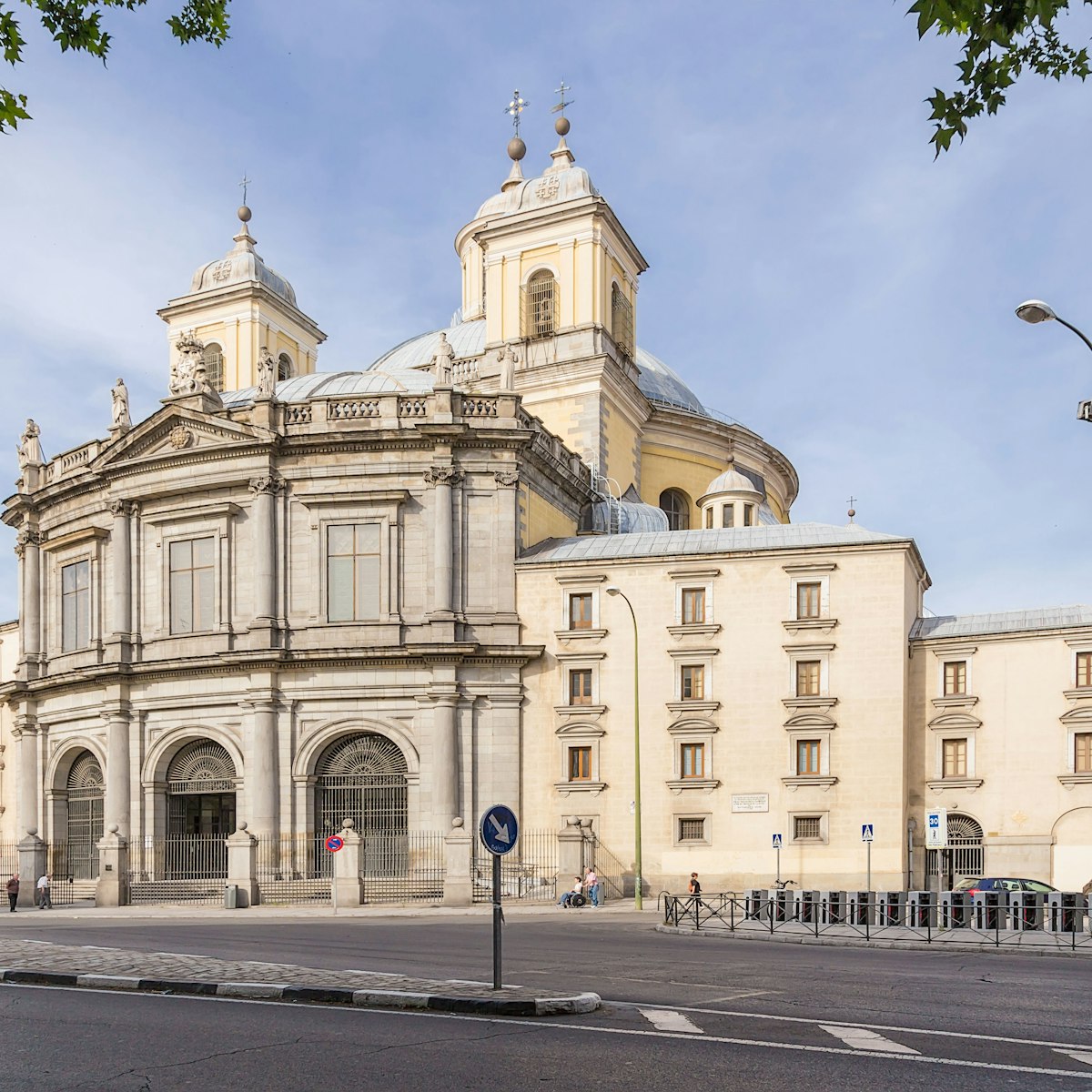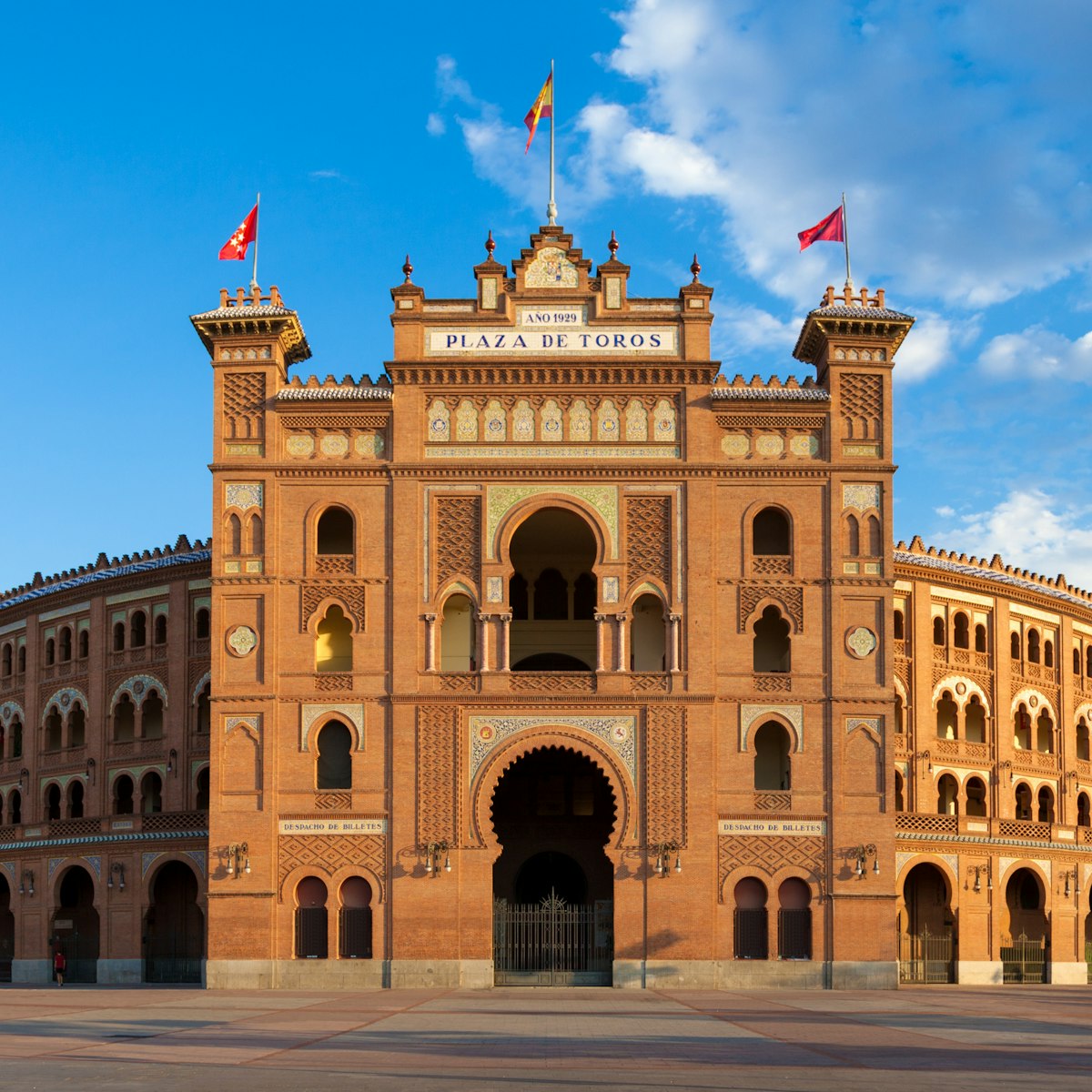Once the exclusive preserve of the Spanish royal family, Parque del Buen Retiro has been public property since the late 19th century. The park’s name means “retreat” in Spanish and the huge 292-acre (118-hectare) green space provides just that to Madrid’s citizens. On any weekend, there’s a festive atmosphere as the grounds fill up with people dancing, fencing, skating and cycling.
Part of a World Heritage Site that includes the nearby museums on the Paseo del Prado, visitors can easily spend a day exploring Retiro’s beautifully landscaped grounds. Offering rose and topiary gardens, museums, monuments and open-air cafes, there’s a huge amount to see so you will want to plan carefully if you want to catch the highlights. These include the world's only publicly commissioned statue of Lucifer, Madrid’s oldest tree and the grand boating lake that sits at the heart of the park.
Insider tip: The eastern side of the park is less touristy and yet has some interesting sites, including the recently reopened artificial mountain, which gives visitors views of the city. Heading south along this side of the park you’ll also find the relocated ruins of a medieval church, the grounds of an old zoo, and a gorgeous walled garden containing a muster of peacocks.
How much time you need in Parque del Buen Retiro: three itineraries
If you have 30 minutes
Enter the park from the Puerta de Felipe IV close to the Museo del Prado. Here you’ll find the Jardín Parterre, an elegant topiary garden that overlooks El Casón del Buen Retiro, one of the last remaining parts of king Felipe’s palace. Arrive just before the sun sets below this elegant brick building and watch the ever more interesting shapes cast by the garden’s hedges and grand statues as their shadows stretch towards you across the sandy ground.
The most impressive shape of all in this garden is the huge shaggy Ahuehuete tree. A lone survivor from the destruction wrought by Napoleon’s troops, Madrid’s oldest tree journeyed here all the way from Mexico in the 17th century. Those hungry for more history should head to the Paseo de las Estatuas, a collection of statues of past Spanish kings that line an avenue leading up to the park’s boating lake.
If you have 90 minutes
Both the Jardín Parterre and the Paseo de las Estatuas lead up to the western side of the boating lake. This spot is usually bustling with buskers playing to the crowds of pleasure seekers enjoying the views of the impressive Monument to King Alfonso XII across the Estanque Grande. To take it all in either order a drink from one of two open-air cafes or hire a boat from the north end of the lake.
To the south of the lake, you’ll find the Fuente Egipcia, a faux Egyptian fountain with a suitably outlandish legend attached to it: the enormous fortune of Felipe IV is rumored to be buried beneath the two stone sphinxes. Near to this monument, another pair of mythical creatures stand guard on either side of the doors to the Palacio de Velazquez. An annex to the Centro de Arte Reina Sofía art museum, here, visitors can enjoy temporary modern art exhibitions absolutely free of charge.
If you have half a day
The Palacio de Velazquez is not the only Reina Sofía gallery nearby. Venture further south and you’ll come upon the Palacio de Cristal, a huge greenhouse built in 1887 to house flora brought over from the Philippines — then a Spanish colony. Sadly, at the time, Filipino natives were also brought over and forced to live in their “natural habitat” by the side of the ornamental pond outside. The dark history of this human zoo was rightly exposed and condemned in a 2021 exhibition by Filipino artist, Kidlat Tahimik, held in the space.
Further south from here is a pretty space with a less troubling history. Designed in 1915, the Rosaleda Garden is a romantic little enclave with over 4000 roses. They are in full bloom from May to June, however, bear in mind that this part of the garden closes earlier than the rest of the park at 8pm.
Finish off your visit with a look at El Angel Caído. A statue of Lucifer falling from grace, The Fallen Angel is Ricardo Bellver’s homage to Milton’s Paradise Lost. Mounted on a plinth complete with grinning demonic heads, this satanic statue stands at precisely 666m above sea level!
History of Parque del Buen Retiro
Originally the spiritual retreat of Spain’s ultimate power couple, Isabella and Ferdinand, Retiro evolved into a pleasure palace when the rather less devout Felipe IV wore the crown. Built by his valido (the equivalent of Prime Minister), the Conde Duque de Olivares, more than 20 buildings went up between 1630 and 1660 to please the playboy king who enjoyed balls, theater and reenactments of naval battles performed on the park’s central lake.
Besides the lake, only two buildings survive from this heady time, both owned by the Museo del Prado: The Cason del Buen Retiro and the Salon de los Reyes. The rest was destroyed when Napoleon’s troops camped out in the park and used the buildings and trees as target practise. When the park finally fell into public hands after the disastrous rule of Isabel II, much of the grounds were extensively relandscaped. However, to the north are some interesting buildings that date from the time her father, Ferdinand VII, was king of Spain. These include a charming fishing house and the park’s former zoo.
Tickets and other practicalities
The park is open from 6am throughout the year, through to 10pm in autumn/winter and midnight in spring/summer. On especially windy days you might find it closed due to the danger of falling branches.
Hiring a bike or scooter is a great way to get around the park. While there are plenty of companies offering this service, Retiro Magic is conveniently located right next to the park and offers Segway and bicycle tours in English.
Entry to art galleries within the park is free of charge.











